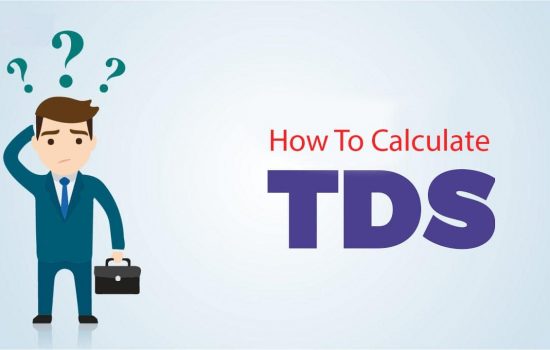TDS -Tax Deducted Source | Under Goods & Services Tax 2023
What does Tax Deducted at Source (TDS) in GST mean?
TDS in GST refers to the tax deduction made by the recipient of goods or services at the point of supply. The tax deducted is considered an early payment of the supplier’s GST liability. The TDS system under GST applies to specified kinds of registered persons and is governed by Section 51 of the Central Goods and Services Tax Act, 2017.
To ensure that TDS regulations are followed, the deductor must obtain a GST registration and file TDS returns on a regular basis. TDS returns must include the amount of tax deducted, the amount paid to the supplier, and the provider’s GSTIN. In addition, the deductor must provide the supplier with a TDS certificate as confirmation of the tax deducted.
Who is Eligible for GST TDS Deduction?
TDS regulations under GST apply solely to a specific category of registered persons called ‘deductors’. Deductors are typically government agencies, public-sector corporations, and municipal governments. If the entire value of such supply reaches ₹2.5 Lakhs in a fiscal year, the deductors are required to deduct TDS at the rate of 2% of the value of the provision of goods or services, excluding taxes.
Some of the registered persons who are eligible to deduct TDS under GST are as follows:
- Departments of the federal or state governments.
- Local authorities.
- Government agencies.
- Companies in the public sector.
- Legislative organisations.
How Do You Calculate TDS in GST?
TDS is 2% of the taxable value of the goods or services delivered. The TDS shall be calculated and deducted by the deductor based on the value of the provision of goods or services (excluding of taxes). Furthermore, the deductor is required to deposit the TDS with the government within 10 days after the end of the month in which the deduction was made.

The following is an example of GST TDS calculation:
Assume a government department gets into a contract with a supplier for the provision of items valued ₹5 Lakhs, excluding taxes. In this scenario, the government department’s TDS liability is computed as follows:
TDS = 2% of ₹5 Lakhs = ₹10,000
The government department is required to deduct the TDS of 10,000 from the supplier payment and deposit that money in the government’s account within 10 days of the end of the month in which the deduction was made.
TDS under GST Process
The GST TDS method is as follows:
Step 1: Register
If the deductor is still obliged to be registered under GST, they must get a GST registration.
Step 2: Deductions
If the entire value of such supply reaches 2.5 lakhs in a fiscal year, the deductor must deduct TDS at the rate of 2% of the value of the provision of goods or services, excluding taxes.
Step 3: Make a deposit
During 10 working days at the end of the month in which the deduction was made, the deductor must deposit the TDS that has been thus calculated with the government.
Step 4: TDS Certificate Submission
The deductor is also required to provide the supplier with a TDS certificate that includes the amount of TDS deducted, the amount paid to the supplier, and the amount deposited with the government.
Step 5: Apply for Credit
The provider can claim credit for the TDS deducted by the deductor by including the TDS certificate in their monthly return and submitting it to the appropriate officer.
Conclusion
In conclusion, Tax Deducted at Source (TDS) under the Goods and Services Tax (GST) regime is a method implemented to ensure effective compliance and revenue collection in the GST regime. TDS is levied on particular transactions involving government agencies, local governments, and some designated companies. It mandates the deductor to deduct and deposit a specified percentage of the money paid to the supplier. TDS under GST aids in reducing tax evasion, increasing transparency, and improving tax system efficiency. It contributes to the overall stability of the GST framework by minimising the burden of tax collection on the government and ensuring timely payment of tax bills by deductees.



